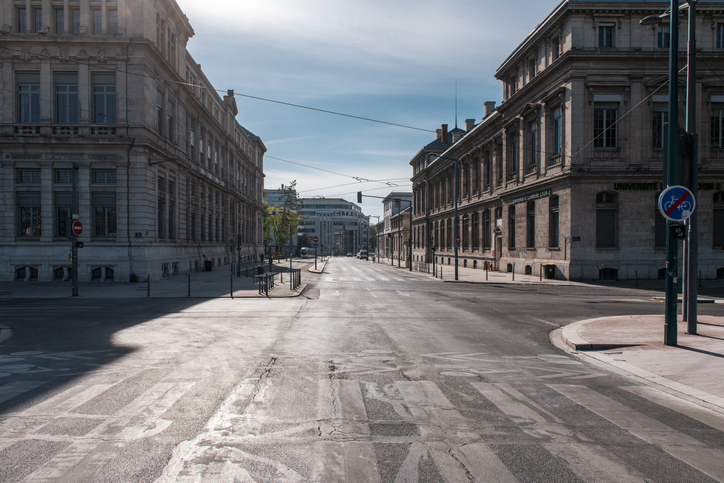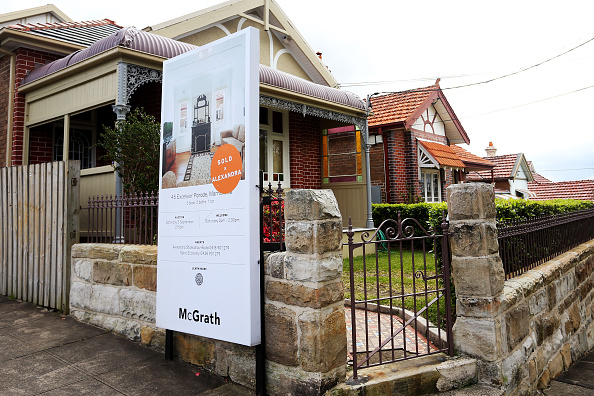What A Commute in a Car-Free City Might Be Like
Imagine a commute in the year 2040.
Look out any window in most urban areas and you’ll see streets lined with parked cars. Every year the arteries of the world’s biggest cities become more clogged. By 2030, 60% of the world’s population will live in cities, analysts estimate, creating a string of global megacities even more crowded and polluted than today. How will they organise daily life to promote safety, efficiency and the well-being of residents?
Now imagine a city without private cars. A city where transportation is emissions-free, largely self-driving and connected to the internet. A city where cars, as well as taxis, buses, trains and bicycles, are shared. Instead of parked cars and concrete, city streets might be filled with mini parks, markets and more.
Several trends are visible today that could bring about these reimagined transportation networks: the rising popularity of electric cars, a regulatory environment that is increasingly geared toward fighting climate change, and advances in technology from electric and self-driving vehicles to the spread of the Internet of Things.
Many obstacles exist. Autonomous cars are still more theory than reality today. Cities will have to pony up huge investments in new public transportation infrastructure. They will have to make technology and policy choices today to make car-free living easier for residents, including restricting private car ownership within the city, levying higher taxes on carbon emissions, making parking prohibitively expensive and shifting regulations and urban planning to favour shared, autonomous vehicles. And it isn’t certain that the public will give up owning cars.
The Massachusetts Institute of Technology, McKinsey & Co., Deloitte, KPMG and others have outlined visions of what a city with greatly reduced personal car ownership would look like. Follow the urban dweller Bonnie as she heads home from a day at the office in 2040.
The Internet of Everything
Before leaving the office, Bonnie books her commute—a shared bicycle to an automated train to a driverless shuttle that will take her to her door—via an app that is connected to a vast Internet of Things. Much of this technology has been available for years, but in 2040 it is ubiquitous.
Buildings, vehicles and transportation infrastructure are all linked, able to share widely and easily on ultrafast wireless networks. Self-driving vehicles communicate with traffic lights, for example, easing the flow of traffic and potentially preventing jams. Bonnie and other pedestrians wear connected clothing that warns vehicles of their presence, preventing many accidents and identifying her to the transportation she uses so her digital preferences can be installed automatically. Two big trends in the 2020s and 2030s drove this shift: the digitization of everything and the drive to eliminate greenhouse-gas emissions by 2050.
A view of the city
When she looks out her office window, Bonnie sees only a handful of cars. The din of engines and honking horns has almost disappeared: Vehicles operating within city limits are electric, and public transportation and taxis are self-driving. Years ago, Bonnie’s city restricted private vehicle ownership within city limits and greatly expanded mass transit to fill the need. Where parked cars once clogged the streets, the city planted trees and built networks of hyperlocal transportation hubs.
Head to the hub
Bonnie heads toward a local transportation hub, a drop-off point for several modes of transportation residents use to get around the neighbourhood, including shared bicycles, electric scooters and driverless shuttles. Faster trains and robotaxis are available for longer distances.
The app-based commute
When Bonnie approaches the parked bicycle, it recognises her and unlocks. Apps connecting modes of transportation emerged more than 20 years earlier, but by 2040 they are more connected—platforms for collaboration between transportation companies and businesses offering services, such as charging vehicles on the fly, repairs, or advertising tailored toward individual passengers using augmented reality. Bonnie has chosen the premium option for her travel plan, a monthly subscription for all forms of transportation.
Personal preferences
Bonnie’s premium plan includes a private pod on the train. After arriving at the station and taking her seat, the train’s network identifies her and adjusts the environment—the seat, lighting and temperature—according to her profile preferences. Screens in the pod automatically connect to her digital world, allowing her to instantly access work files or personal apps. She can check the fridge at home, order groceries online and time a delivery to arrive at her destination when she does.
Board the shuttle
Bonnie gets off at the train station near her home. A self-driving shuttle is waiting to take her the last stretch of the way. Like the train, it adjusts the environment to her preferences and grants her access to her digital world. Bonnie has a conference call with a customer in her calendar. The shuttle establishes the connection at the appropriate time and Bonnie conducts her meeting. At the end of the drive, the vehicle’s digital assistant asks Bonnie about several appointments in her calendar the next day and whether she needs to book a shuttle. Also, her daughter has scheduled a pod to go to her karate lesson but still needs Bonnie’s permission to complete the booking.
Arrive home
Bonnie’s shuttle informs her smart house of her coming arrival. When she gets home, the lights are on and the temperature is just how she likes it. A drone carrying the groceries she ordered en route is waiting for her.
Two visions
If cities make the kinds of choices that Bonnie’s hometown did, 40% of all kilometres travelled by 2040 will be with shared mobility services, McKinsey predicts. If not, McKinsey says, the lack of regulation promoting emissions-free and connected transportation and inertia in consumer behaviour could result in a world in which private car ownership falls only 10% by 2040. That will make it even harder to roll out technology and transport system changes and reduce emissions.
Reprinted by permission of The Wall Street Journal, Copyright 2021 Dow Jones & Company. Inc. All Rights Reserved Worldwide. Original date of publication: November 9, 2021.
 Copyright 2020, Dow Jones & Company, Inc. All Rights Reserved Worldwide. LEARN MORE
Copyright 2020, Dow Jones & Company, Inc. All Rights Reserved Worldwide. LEARN MORE
This stylish family home combines a classic palette and finishes with a flexible floorplan
Just 55 minutes from Sydney, make this your creative getaway located in the majestic Hawkesbury region.
As Paris makes its final preparations for the Olympic games, its residents are busy with their own—packing their suitcases, confirming their reservations, and getting out of town.
Worried about the hordes of crowds and overall chaos the Olympics could bring, Parisians are fleeing the city in droves and inundating resort cities around the country. Hotels and holiday rentals in some of France’s most popular vacation destinations—from the French Riviera in the south to the beaches of Normandy in the north—say they are expecting massive crowds this year in advance of the Olympics. The games will run from July 26-Aug. 1.
“It’s already a major holiday season for us, and beyond that, we have the Olympics,” says Stéphane Personeni, general manager of the Lily of the Valley hotel in Saint Tropez. “People began booking early this year.”
Personeni’s hotel typically has no issues filling its rooms each summer—by May of each year, the luxury hotel typically finds itself completely booked out for the months of July and August. But this year, the 53-room hotel began filling up for summer reservations in February.
“We told our regular guests that everything—hotels, apartments, villas—are going to be hard to find this summer,” Personeni says. His neighbours around Saint Tropez say they’re similarly booked up.
As of March, the online marketplace Gens de Confiance (“Trusted People”), saw a 50% increase in reservations from Parisians seeking vacation rentals outside the capital during the Olympics.
Already, August is a popular vacation time for the French. With a minimum of five weeks of vacation mandated by law, many decide to take the entire month off, renting out villas in beachside destinations for longer periods.
But beyond the typical August travel, the Olympics are having a real impact, says Bertille Marchal, a spokesperson for Gens de Confiance.
“We’ve seen nearly three times more reservations for the dates of the Olympics than the following two weeks,” Marchal says. “The increase is definitely linked to the Olympic Games.”

Getty Images
According to the site, the most sought-out vacation destinations are Morbihan and Loire-Atlantique, a seaside region in the northwest; le Var, a coastal area within the southeast of France along the Côte d’Azur; and the island of Corsica in the Mediterranean.
Meanwhile, the Olympics haven’t necessarily been a boon to foreign tourism in the country. Many tourists who might have otherwise come to France are avoiding it this year in favour of other European capitals. In Paris, demand for stays at high-end hotels has collapsed, with bookings down 50% in July compared to last year, according to UMIH Prestige, which represents hotels charging at least €800 ($865) a night for rooms.
Earlier this year, high-end restaurants and concierges said the Olympics might even be an opportunity to score a hard-get-seat at the city’s fine dining.
In the Occitanie region in southwest France, the overall number of reservations this summer hasn’t changed much from last year, says Vincent Gare, president of the regional tourism committee there.
“But looking further at the numbers, we do see an increase in the clientele coming from the Paris region,” Gare told Le Figaro, noting that the increase in reservations has fallen directly on the dates of the Olympic games.
Michel Barré, a retiree living in Paris’s Le Marais neighbourhood, is one of those opting for the beach rather than the opening ceremony. In January, he booked a stay in Normandy for two weeks.
“Even though it’s a major European capital, Paris is still a small city—it’s a massive effort to host all of these events,” Barré says. “The Olympics are going to be a mess.”
More than anything, he just wants some calm after an event-filled summer in Paris, which just before the Olympics experienced the drama of a snap election called by Macron.
“It’s been a hectic summer here,” he says.

AFP via Getty Images
Parisians—Barré included—feel that the city, by over-catering to its tourists, is driving out many residents.
Parts of the Seine—usually one of the most popular summertime hangout spots —have been closed off for weeks as the city installs bleachers and Olympics signage. In certain neighbourhoods, residents will need to scan a QR code with police to access their own apartments. And from the Olympics to Sept. 8, Paris is nearly doubling the price of transit tickets from €2.15 to €4 per ride.
The city’s clear willingness to capitalise on its tourists has motivated some residents to do the same. In March, the number of active Airbnb listings in Paris reached an all-time high as hosts rushed to list their apartments. Listings grew 40% from the same time last year, according to the company.
With their regular clients taking off, Parisian restaurants and merchants are complaining that business is down.
“Are there any Parisians left in Paris?” Alaine Fontaine, president of the restaurant industry association, told the radio station Franceinfo on Sunday. “For the last three weeks, there haven’t been any here.”
Still, for all the talk of those leaving, there are plenty who have decided to stick around.
Jay Swanson, an American expat and YouTuber, can’t imagine leaving during the Olympics—he secured his tickets to see ping pong and volleyball last year. He’s also less concerned about the crowds and road closures than others, having just put together a series of videos explaining how to navigate Paris during the games.
“It’s been 100 years since the Games came to Paris; when else will we get a chance to host the world like this?” Swanson says. “So many Parisians are leaving and tourism is down, so not only will it be quiet but the only people left will be here for a party.”
This stylish family home combines a classic palette and finishes with a flexible floorplan
Just 55 minutes from Sydney, make this your creative getaway located in the majestic Hawkesbury region.






















